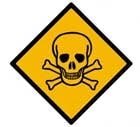U.S. Environmental Protection Agency (EPA) Administrator Lisa P. Jackson announced the agency’s decision to move forward with the development of a regulation for perchlorate to protect Americans from any potential health impacts, while also continuing to take steps to ensure the quality of the water they drink. The decision to undertake a first-ever national standard for perchlorate reverses a decision made by the previous administration and comes after Jackson ordered EPA scientists to undertake a thorough review of the emerging science of perchlorate. Perchlorate is both a naturally occurring and man-made chemical, and scientific research indicates that it may impact the normal function of the thyroid, which produces important developmental hormones. Based on this potential concern, EPA will move forward with proposing a formal rule. This process will include receiving input from key stakeholders as well as submitting any formal rule to a public comment process.
Scientific research indicates that perchlorate may disrupt the thyroid’s ability to produce hormones that are critical to developing fetuses and infants. Monitoring data show more than 4% of public water systems have detected perchlorate and between five million and 17 million people may be served drinking water containing perchlorate. The science that has led to this decision has been peer reviewed by independent scientists and public health experts including the National Academy of Sciences. Perchlorate is used in the manufacture of rocket fuel, fireworks, flares and explosives, and may be present in bleach and some fertilizers. This decision reverses a 2008 preliminary determination by the previous administration, and considers input from almost 39,000 public comments.
EPA will continue to evaluate the science on perchlorate health effects and occurrence in public water systems. The agency also will begin to evaluate the feasibility and affordability of treatment technologies to remove perchlorate and will examine the costs and benefits of potential standards.
In a separate action, the agency also is moving towards establishing a drinking water standard to address a group of up to 16 toxic chemicals that may pose risks to human health. As part of the Drinking Water Strategy laid out by Jackson in 2010, EPA committed to addressing contaminants as a group rather than one at a time so that enhancement of drinking water protection can be achieved cost effectively. The action delivers on the promise to strengthen public health protection from contaminants in drinking water.
EPA will develop one regulation covering up to 16 chemicals that may cause cancer. This group of volatile organic compounds (VOCs), which are chemicals such as industrial solvents, includes trichloroethylene and tetrachloroethylene as well as other regulated and some unregulated contaminants that are discharged from industrial operations. The VOC standard will be developed as part of EPA’s new strategy for drinking water, announced by the administrator in March 2010. A key principle of the strategy is to address contaminants as groups rather than individually in order to provide public health protections more quickly and also allow utilities to more effectively and efficiently plan for improvements.
Source: U.S. EPA


